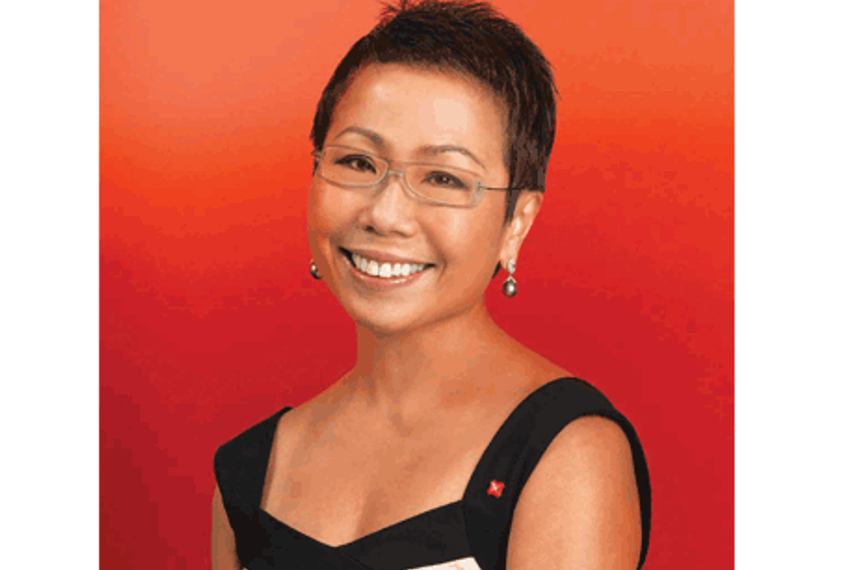
DBS Bank has announced its intent to expand in India. For the Singapore-headquartered bank, India is a key market, underline Karen Ngui, MD - group strategic marketing and communications, DBS Group Holdings and Sheran Mehra, head - group strategic marketing and communications, DBS Bank India. In conversation with Campaign India, they also reveal why marketing would be central to the growth agenda. Edited excerpts:
From 12 branches and 37 ATMs, you revealed has plans to open 50 branches in India in three years (ET, Nov 2013). What will be the marketing support for this expansion on the retail banking side (going to 70-100 branches, according to reports)?
Karen Ngui (KN): Increasing the number of branches is contingent upon the developments on the regulatory (Wholly Owned Subsidiaries, or WOS) front. DBS being an Asian bank, India is a very important market to us. India, China being such large markets, we have been looking forward to this opportunity to expand in the Indian market.
At the end of the day, it’s about being relevant to our customers. Marketing would be very central to how we are able to connect with our customers and inform them about our products and services, what we stand for, what we support through CSR. Marketing, in totality, is where you’re able to pull together all the different communication streams and crystallize that into a value proposition.
If WOS works out and we have clarity on its guidelines, we’re looking at a time frame of three to five years to go from 12 to 70 or 100 branches across India.
Is there a certain profile of core consumers for DBS in India, for retail banking?
KN: There might be some trends, nuances that are more specific to Indian consumers. But given the internet age, the boundaries are fast disappearing. We find that the affluent consumer across Asia largely wants the same things. Which is, you expect your bank to be safe and at DBS we can provide that assurance. At the same time, we’ve been keeping ahead of the information age. So our ability to offer information services that are easy and smart is what we’ve started in Singapore and we hope to take that to our other markets. We feel it is very important to stand by our customers through good times and bad and this is why we place a premium on customer relationships and developing our products and services around the customer.
The consumer is a lot smarter these days and a lot more in control in terms of what sort of information and demands s/he has from the bank. Distribution of information and some form of footprint is critical. By and large people are interacting over the phone, and that has suddenly levelled the playing field because it is no longer about your physical footprint but your ability to reach out to your customers in a digital, 24 * 7 space.
Sheran Mehra (SM): In India, we don’t cater to the mass market, only to the affluent market. The greater need is for exclusivity and everyone is in a similar space. For DBS, we need to figure out, how we create a differentiation for ourselves in that market. So, we leverage on the India-Singapore corridor.
Given the two-way interaction in the digital space, would you say that the consumers have an influence over the kind of services that DBS provides?
KN: Yes. For example, in Hong Kong we are now able to process a loan application by scanning your identity card, we process it in a minute. The consumers now want everything fast which leads us to develop our processes according to their needs. The ability to customise our services, to expedite and be accessible is the top priority for us.
The way people consume information and interact with their bank has changed and unless we are able to leverage technology to respond and engage with them, service providers risk becoming obsolete.
Is scale of operations in India an operational disadvantage in the banking sector? Specifically, does it affect marketing plans w.r.t. competition?
KN: In Singapore we have a population of five million. Out of this number, four million people are our customers. It is safe to say that in Singapore, we cater to the masses. In that sense, we are the banker to every Singaporean. But in India, our focus is on the affluent given our ability to reach out better to them while playing to our strengths. Our focus is also on the SMEs and the corporates. It’s about how we can value-add to the customer. So, I wouldn’t call it a disadvantage as we are better positioned to serve the mass affluent customer base in India.
Especially in a slowdown, we find that the most trusted brands in the financial sector in India are the nationalised entities. How does being a foreign entity in the space affect perception? Do different consumer segments behave differently on this count?
KN: We might not be a national(ised) Indian bank but we see ourselves as a partner to our affluent customers, SMEs and the corporates. As an Asian bank, we understand India quite well. In addition to that, we’re able to provide the India-Singapore connection to our customers. So, it’s quite different from a global bank where they are headquartered outside Asia. Our senior team has been Asia-based for a long time.
Consumers would ultimately go to a bank that is able to address their needs best and which offers products and services more relevant to them and that is the challenge all banks face. There are many credible players in the Indian market and it all boils down to which bank succeeds in making that connection with its targeted customer base.
How big is the marketing team in India? Or is it supported centrally?
KN: As an Asian bank, we feel it is important that we stay close to our customers. The country marketing team is led by Sheran. We want them to be completely tuned in with the needs of our customers which is why we adopt a framework to develop programmes, directions and products. But how all of these things are implemented is in the hands of the marketing team here in India.
SM: We have a team of six people here. But there is a lot of guidance that comes in from Singapore.
What are the key differences in DBS’ marketing and communication strategy in India versus other markets?
KN: The principles that drive what we do are consistent across the region. If in a certain market channel A is proven to be more effective than channel B, that is where we will adjust. The message that we put through about what the bank stands for remains consistent. The ‘what’ stays the same and the ‘how’ we do it is subject to change. Our distribution network in Singapore is very different from what we have here in India. We are in an age where it doesn’t matter if you have 12 branches or 12,000 branches as the customers have moved into the digital space. So we believe that the future of banking relies on the ability to leverage technology to engage the customer.
SM: There won’t be different communication strategies as such. There are similarities in Asian markets. The message remains the same across our markets save for some local flavours unique to the regions. There won’t be a different messaging per se but the channels through which we spread this message across may differ. For example: Facebook is more popular in India whereas WeChat is popular in China. At best the local elements and language may change but the core message developed by our marketing and communications teams would remain the same.
The bank is on record saying the SME business is a focus area in emerging markets, including India. Any specific efforts to target the SME community here?
KN: We’re looking at certain industry groups whereby we can play to our strengths. We’re also looking to see how we can deliver better knowledge and Asian insights about how the industries are progressing. We can help SMEs in India as they grow larger given their want to regionalise and expand to Singapore or China. We are in a very good position to help provide that Asian connect.
How has DBS Bank utilised the digital platform across markets? The bank's social media campaigns are centred on peer-to-peer sharing: will the same approach apply for engaging the Indian consumer?
KN: Affluent consumers in India, which is our targeted group, would want the same things as they do in other markets. What they want from a bank is reliability, trustworthiness, speed of processing etc. At DBS we believe in supporting social entrepreneurships. So last year, in Singapore we partnered with the University of Singapore and launched a social enterprises and business case competition. We had over 400 entries across 20 countries. Out of 400 entries, 163 came from India. This is where we’d leveraged the digital space to get the word out.
If we adapt a campaign for India and it makes it easier for the consumers in India, then why not?
Which are the communication partners (agencies) in India? Is there work for India (eCRM, etc.) being handled from other markets? Is the reverse a possibility?
KN: It’s all done out of India.
Sheran: We don’t have AORs in India and work only on project basis. Convonix and Socio Square are our digital agencies and we have been working with them since September 2013. The (digital) creatives during that time were done by Lbi and Resultrix. We are currently working with Cartwheel on some projects. In addition, we have a very strong team in Singapore supporting us. They provide us with research and learnings from Singapore.


.jpg&h=334&w=500&q=100&v=20250320&c=1)
.jpg&h=334&w=500&q=100&v=20250320&c=1)

.jpg&h=334&w=500&q=100&v=20250320&c=1)


.jpg&h=334&w=500&q=100&v=20250320&c=1)


.jpg&h=334&w=500&q=100&v=20250320&c=1)
_20230509021800.png&h=268&w=401&q=100&v=20250320&c=1)



.jpg&h=268&w=401&q=100&v=20250320&c=1)


